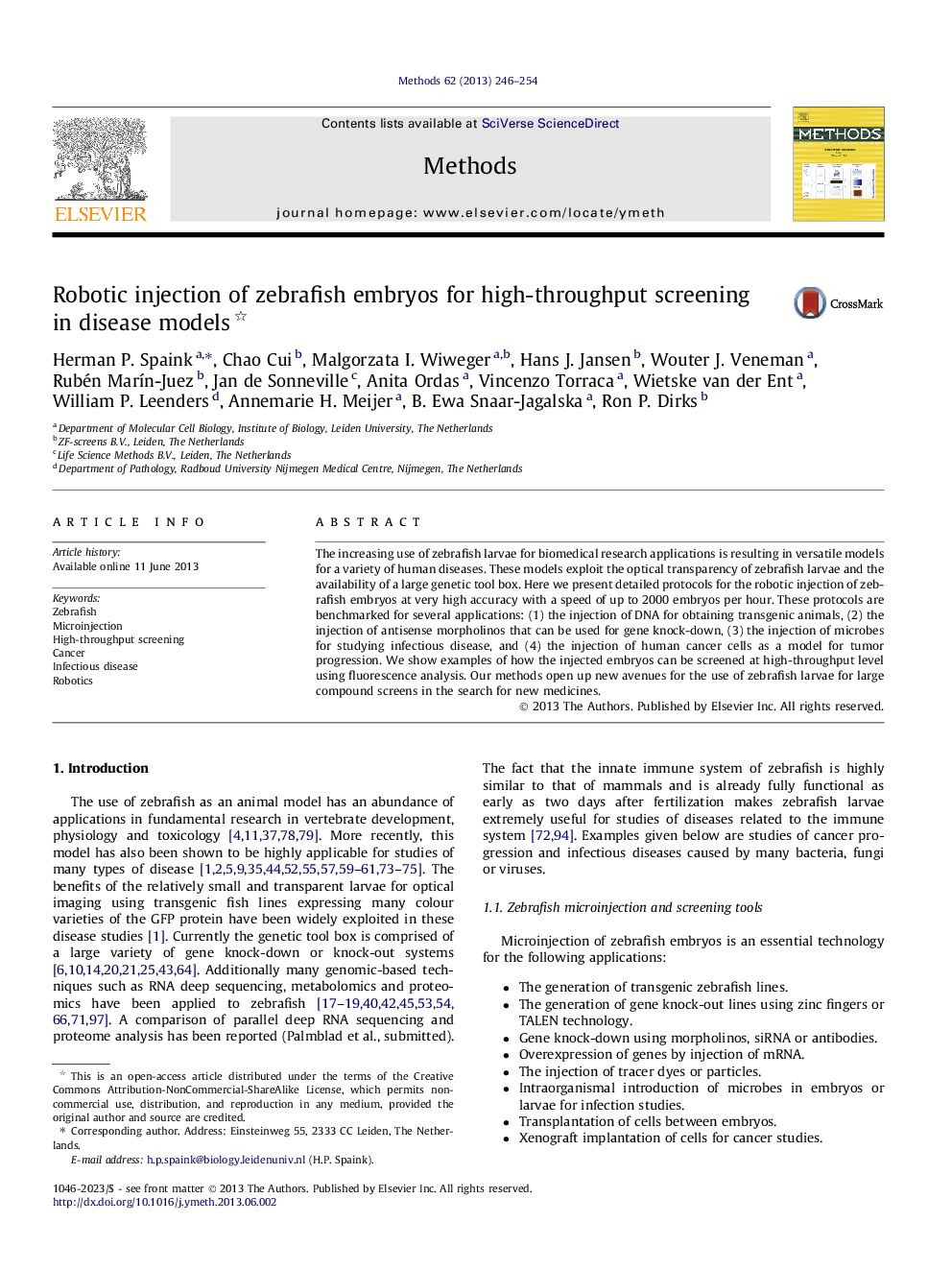| Article ID | Journal | Published Year | Pages | File Type |
|---|---|---|---|---|
| 10825872 | Methods | 2013 | 9 Pages |
Abstract
The increasing use of zebrafish larvae for biomedical research applications is resulting in versatile models for a variety of human diseases. These models exploit the optical transparency of zebrafish larvae and the availability of a large genetic tool box. Here we present detailed protocols for the robotic injection of zebrafish embryos at very high accuracy with a speed of up to 2000 embryos per hour. These protocols are benchmarked for several applications: (1) the injection of DNA for obtaining transgenic animals, (2) the injection of antisense morpholinos that can be used for gene knock-down, (3) the injection of microbes for studying infectious disease, and (4) the injection of human cancer cells as a model for tumor progression. We show examples of how the injected embryos can be screened at high-throughput level using fluorescence analysis. Our methods open up new avenues for the use of zebrafish larvae for large compound screens in the search for new medicines.
Related Topics
Life Sciences
Biochemistry, Genetics and Molecular Biology
Biochemistry
Authors
Herman P. Spaink, Chao Cui, Malgorzata I. Wiweger, Hans J. Jansen, Wouter J. Veneman, Rubén MarÃn-Juez, Jan de Sonneville, Anita Ordas, Vincenzo Torraca, Wietske van der Ent, William P. Leenders, Annemarie H. Meijer, B. Ewa Snaar-Jagalska,
